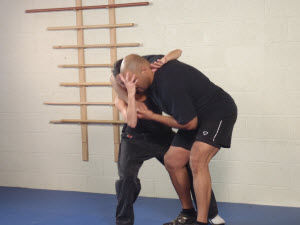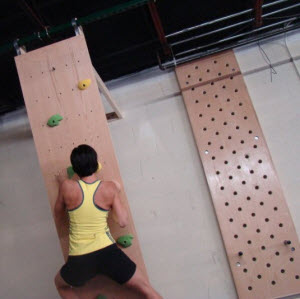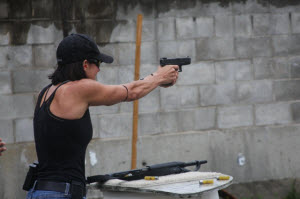 Imagine that a couple is preparing for the arrival of their first child. As most new parents do, they take painstaking measures to ensure that their house is absolutely safe from any threat that could befall the young one. As they have no idea exactly how the child will behave as s/he gets older, or the many dangers that could be encountered, they assume that nearly everything could be a threat. They install gates, outlet covers, room monitors and security cameras. To an outsider, it may seem to be a bit much, but to the family attempting to keep their child safe, their actions bring peace of mind.
Imagine that a couple is preparing for the arrival of their first child. As most new parents do, they take painstaking measures to ensure that their house is absolutely safe from any threat that could befall the young one. As they have no idea exactly how the child will behave as s/he gets older, or the many dangers that could be encountered, they assume that nearly everything could be a threat. They install gates, outlet covers, room monitors and security cameras. To an outsider, it may seem to be a bit much, but to the family attempting to keep their child safe, their actions bring peace of mind.
Now, imagine a different family in the same situation. They, too, are preparing for their first child to come home. Rather than take precautionary measures to avert the many potential threats in their home, they put all of their energy into securing what they feel is the largest threat: the electrical outlets. Fearful that their child could be electrocuted, they are diligent in their research of the best outlet covers available. After they find them, they attend training classes that discuss proper installation and maintenance. After all the research, effort and energy they put into their endeavor, they would be considered absolute experts on outlet cover safety procedures. But what good will that expertise be for them if their child eventually wanders past the secured outlets and falls into the unsecured swimming pool? Obviously, not much.
As ridiculous as the story sounds, the scenario is similar to the manner in which most people view personal defense. Not unlike the second couple, who narrowly focused on one aspect of danger in their home, many individuals tend to zone in on a particular type of threat they may encounter. As they dedicate more time preparing to respond to that one particular situation, they may actually be limiting their ability to create a well-rounded and effective training resume.
While they may recognize the potential for many different types of threats, there is a tendency to default to a singular form of training. For example, one individual may pour energy into strategic de-escalation techniques, another may focus entirely on unarmed responses to a violent encounter, while yet another may spend their time on firearms defense. Each of those concepts is a vital skill to have in defensive training, but when someone focuses on only one or two areas, they are behaving like the couple who focused entirely on the outlet covers. Their training will be extremely effective should they encounter the threat they have prepared for, but what if it’s different?
For someone who wants to maximize their training in a sincere effort to increase their overall safety, the only true solution is to educate themselves in various areas of defense. When done well, this process is called Integrated Self Defense.
When I work with clients to create an ISD program, we focus on four separate areas of training. Let’s take a look:
1. The Defensive Mindset
Whether it is a conscious effort to maintain awareness or a commitment to listen to your intuitive instincts, all personal defense begins and ends with a particular frame of mind. Hours spent on the range, on the mat, or watching programs designed to help you stay safe will be useless if you are not committed to the vigilance of your own personal safety. There are three areas of mindset to consider:
Be capable and WILLING to take all necessary steps to ensure your safety, up to and including lethal measures.
Understand the concept of Intuitive Decision Making. Every human being has an innate ability to intuitively sense danger. Whether the danger is overt (such as a brick being thrown at your head) or perceived (an odd or uncomfortable feeling about a place, circumstance, situation or individual), the human body is wired to recognize a threat. When it comes to proactive decision making regarding safety, you don’t need to know WHY you feel uncomfortable in a building, around a person, or in a situation. You only need to know that you DO. Then take the necessary steps to remove yourself from that situation.
Be aware of places, people, circumstances and events. The phrase “Stay Aware” has been overused to the point of becoming a cliché. Regardless, the credibility of the phrase is undeniable. Defensive training is useless if awareness of the circumstances in which it is used is not considered. The social, socio-economic and physical environments that someone places themselves in do make a difference in the potential for danger.

Fitness is a fundamental component of safety, but one that is most often overlooked by those who “train.”
2. Physical Fitness
Being unfit is the surest way to invalidate any type of defense training. When I speak to audiences about the steps they can take in the pursuit of safety, I always begin with taking care of their bodies. While a firearms enthusiast might argue that they won’t be in a physical altercation, or the awareness expert contend that their good choices will keep them out of danger (I have heard both!), the reality is that a truly pro-active individual will assume they will be in any number of situations and will choose to train for them all.
The ability to run, maneuver, fight, shoot, and endure an intense situation even for a number of seconds is critical. Being unfit will render an individual ineffective after only a few seconds, and greatly diminish the likelihood of their walking away from a situation safely.
Regardless of your age or gender, keep yourself healthy. Staying safe is obviously an important component to your life or you wouldn’t be reading this article. Why give anyone the upper hand in an altercation simply because you haven’t taken the time to exercise?
3. Close Quarters Training (Unarmed)
This is the type of training that most people default to when they consider taking a “self-defense course.” A Google search of the term “self defense” delivers literally millions of responses, including martial art classes, reality-based self defense programs and personal safety programs. Interestingly, only a handful of these programs will really be effective. To the individual who is new to the concept of self defense, the number of choices can be overwhelming. When people ask me what to do or where to go, I ask them to consider these questions:
Can You Get a Referral? If you don’t have a lot of experience in unarmed defense, go to someone who does. Ask questions and get feedback on programs in your area. Unarmed self defense is big business. And as most businesses do, companies offering self-defense training put a great deal of energy and money into their marketing strategies in an effort to get folks like you to sign up. Do not waste your time or money on programs that simply sound good. Find someone you trust and allow their experience to help guide you to a reputable training course.
Is It Appropriate? After being referred to a program, your work is still not done. Watch some classes and decide if they are appropriate for you. Consider your fitness level, experience, and age, and see how those fit with the classes you’re watching. For example, a man in his 60s will — and should — train differently for unarmed defense than a man in his 20s. Look at a few of the programs that were referred to you and find one that suits you.
Is It Simple? A solid unarmed program is going to focus on simple, basic defensive skills. It will consist of two or three types of strikes, close-quarter environment and partner training. The material should cover “stand up” defense, ground fighting, and techniques to be used in enclosed environments like cars. Formal martial art programs can be a great asset to your life, but if your priority is learning defensive skills, take the fast track and go to a program that specializes in that.

Training with tools such as firearms is an important piece of the training puzzle for those who wish to be as prepared as possible.
4. Training with Tools (Armed)
When people think of armed self defense, they almost exclusively think of firearms. Without question, a clear understanding of firearms should be in everyone’s training resume. With the superior defensive firearm training programs that are available, there is no excuse for an individual who has access to a firearm not to train with it in a variety of scenarios.
However, it is important to note that someone truly committed to building their defensive profile should also be familiar with other defensive tools. Here are a few basics that I recommend everyone have experience with: Tasers, pepper spray, blades, and sticks (long and short). While each of these tools may not be for everyone, having a clear understanding of how they work can be an essential piece of the defensive puzzle.
Conclusions
Training yourself, your students, or your loved ones to be effective in the many ways that they can keep themselves safe is not complicated. It is, however, a multi-dimensional process that should include varying responses to the many different types of threats that can present themselves.
Get out of your comfort zone. Choose one of the above areas that you have not spent a lot of time in and give it a try. Remember, while you may want to be the outlet-cover expert, you never want to be the one who drowns in the unsecured swimming pool. The only successful way to accomplish both is to integrate your training!

Very interesting and informative article! Very well done! Michael
Great article. I am so happy I found this website! So many great articles and videos!
Terrific article! Great info and well articulated.
Great Article but I must add allso that anything can be used as a weapon, look around your suroundings, a piece of furnture, pen fork purse anything were you are currently at can help in your self-defense